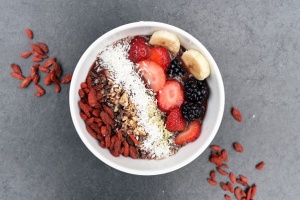 Sterility or more precisely infertility is essentially an inability to conceive or bring the fetus to a term when it can be independent for outside world.
Sterility or more precisely infertility is essentially an inability to conceive or bring the fetus to a term when it can be independent for outside world.
When talking about treating infertility, then we think of both partners, i.e. we treat the couple who wants to have a child. There are many well-known medical conditions that lead to inability to conceive which can be treated. These medical conditions are divided into equal percentages in the female and male partner, 40% of the causes of sterility are female, 40% are of the male partner, while about 20% are of common or unknown origin. With the help of medical techniques, some of them are successfully treated and lead to an increased rate of conception in a couple who struggle with infertility. Also, with the rapid development of In vitro technologies, those couples who have not proven the cause of sterility can be successfully treated.
But many couples are not advised to change some of the dietary habits. That can successfully help themselves without complex and painful procedures, or will lead to much greater success. In the in vitro method if they undergo a special individual diet, with particular emphasis on certain dietary supplements would have a very high percentage of success and spontaneous conception.
We will not describe all possible causes of infertility, nor would you expect success only by changing the diet mode where there is a mechanical nature (obstruction of the pipelines). The greatest success with a nutritional approach would be patients who suffer from polycystic ovaries, endometriosis, changes in hormonal status, and in the treatment of male infertility (reduced sperm count, reduced mobility, etc.). Treatment should last for 3 months to expect significant improvement in the clinical picture.
Оne of the most common causes of infertility are polycystic ovaries. They are characterized by a change in the ratio of FSH and LH, ie there is a steadily elevated LH hormone, high estrogen, elevated testosterone levels, ovulation does not occur, and subsequent conception. They have a characteristic ultrasound appearance (after which have received their name): enlarged ovaries with thickened marrow-stroma and many small under 5 mm follicles on the surface of the ovary that look like a pearl thread. These patients, often suffer from irregular, poor menstruation, increased palpability and acne appearance on the face and body, with varying degrees of manifestation and representation. Тhe cause of this syndrome can not be said with certainty, half of the patients have an increased body weight (BMI> 30) and have proven insulin resistance, and when that is treated, polycystic ovary syndrome is treated as well. Insulin resistance is also proven in some patients with low BMI (body mass index). It’s very interesting when treating this syndrome the chances of getting pregnant increase by as much as 80% if other causes of infertility-sterility are excluded.
For the nutritional strategy-treatment of the PCO syndrome, it is essential to assemble an individual regimen that will lead to weight loss and reduction of the adipose tissue in the woman. No fast and rigorous diets should be maintained, as they will lead to the loss of muscle tissue and body fluids, and the greatest estrogen production and its transformation into testosterone occurs in the fat tissue. Also, the fat subcutaneous tissue is responsible for insulin resistance, as the cause of the whole condition. The diet should be directed to a low glycemic index diet, to remove everything from white flour, sweets, and sweet juices. The basic energy should be from fruits and vegetables (you need to get a juicer, and use fresh juices from fruits and vegetables that will help detoxify the body-a very important thing, because it will allow the liver to release faster the excess of estrogen that circulates in the blood).
It’s important to import beans, lentils, green beans, soy, tofu, chickpeas, flax which besides being low-glycemic index products have natural properties to regulate the hormones). Strict reduction of saturated fats of animal origin, because fatty foods such as meat and fatty milk products only exacerbate insulin resistance, and at the same time most commonly include xenoestrogens(artificial products given to animals for better meat or milk, and have in the human body the effect of estrogen, and thus exacerbate the condition of polycystic ovaries).So the source of protein and fat should be from fish, soybeans, legumes, which will add enough amounts of Omega 3 fatty acids, which in addition to the inflammatory effect will have a beneficial effect on insulin resistance and regulation of hormonal status.
It is strictly forbidden to drink alcohol especially in large quantities because it acts as an estrogen in the body, and hinders the resorption of zinc, iron, and B6, much needed to maintain fertility. At most 1 cup of red wine, which has a protective effect on the blood vessels and the heart, leads to the raising of good cholesterol in the blood.
Of the supplements recommended are: Omega 3 fatty acids of fish oil, B group vitamins, saw palmetto, (a preparation that has been clinically proven to block the excess of male hormones in the blood) a plant that grows in Mediterranean areas – vitex agnus castus or monk’s pepper , or chaste tree, which encourages the ovary to ovulate and synthesize progesterone.
In any case, any of these preparations and the onset of a special regimen must not be initiated without consultation with a gynecologist or a certified nutritionist in the area.